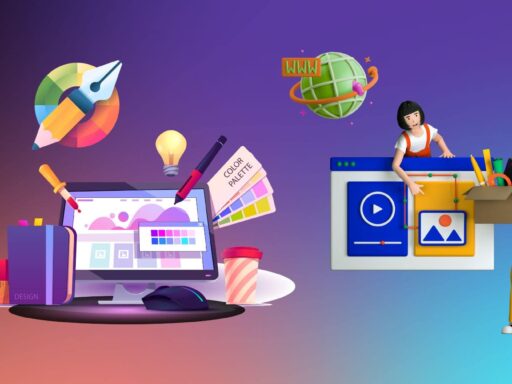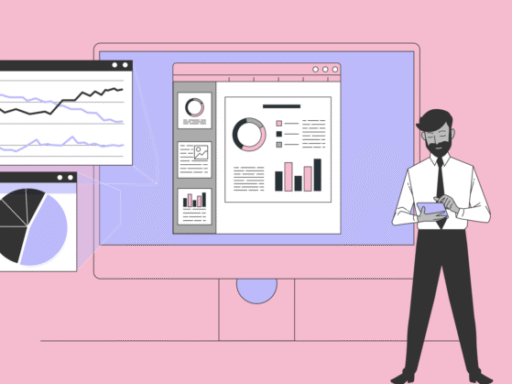The field of design is always changing as professionals work to improve user experiences (UX) and create intuitive user interfaces (UI). At the heart of this transformation are UI and UX tools that help designers bring their ideas to life. These tools play a crucial role at every stage of the design process, from brainstorming concepts to testing usability, ultimately leading to products that not only function well but also delight users.
In this article, you will find a list of the best UX design tools and tips on choosing the right UX tools for your needs. We’ll also explore the emerging trends in UX design tools for 2025.
Here’s a list of the best UX design tools that can help you create engaging and interactive experiences:
Figma
Figma is an innovative, cloud-based design platform that’s widely used for creating user interfaces (UI), user experiences (UX), graphic designs, and wireframes. What sets Figma apart is its web-based nature, which means you can access it directly from a browser without needing to install any software. Here are some of the key features of Figma:
-
Cross-Platform Accessibility
Because Figma is web-based, it works across different operating systems, including Windows, macOS, and Linux. You can simply log in to your account from any device, making it ideal for designers who often switch between multiple computers or need to work remotely.
-
Real-Time Collaboration Like Never Before
Figma allows multiple people to work on the same design file at the same time. Think of it like Google Docs but for design work. Changes made by one person are immediately visible to everyone else, which is perfect for teams who need to collaborate closely on projects, providing real-time feedback, and making quick adjustments.
-
Learning Made Easy for Beginners
The platform provides a range of tutorials, design resources, and community assistance to make it easier for new users to get started. Because of Figma’s user-friendly interface, even individuals with no experience in design may get started right away without feeling overwhelmed.
-
Advanced Vector-Based Design Tools
Figma’s tools allow you to create detailed and scalable vector graphics, which are essential for building designs that look sharp on any screen. Whether you’re creating icons, buttons, or entire layouts, Figma’s precision tools help bring your vision to life.
Adobe XD
Adobe XD is a graphic design application developed to allow users to design and wireframe websites, mobile applications, and any other forms of digital products. Users can enjoy this tool across different platforms such as MAC, Windows, iOS and Android which allows them to not just design but also view the application on different devices to understand how it would appear in real life. Main features include:
In Adobe XD, additional interactive components and animations can be developed to give your site or application prototypes an added layer of detail.
-
Quick and Efficient Design Iteration
You can use the interface to create designs, test them, and edit them as necessary with relative ease. Whether you are repositioning a graphic element or changing an animation setting, there are time-saving features in Adobe XD to make it effortless to update any part of your work in progress without getting distracted.
-
Seamless Team Collaboration
Adobe XD lets teams work together by sharing design links for feedback or co-editing the same document. Everyone can see the latest changes in real time, making collaboration more fluid and ensuring that feedback is quickly integrated into the design.
-
Integration with Other Adobe Tools
Because Adobe XD is part of the Adobe Creative Suite, you can easily import assets from Photoshop or Illustrator, enhancing your designs with images or illustrations created in other Adobe applications.
Balsamiq
Balsamiq is a wireframing tool designed to help you create basic, low-fidelity mockups that focus on the overall structure of a design rather than the finer details. It’s perfect for sketching out ideas quickly and getting a rough sense of how a layout should be organized, making it ideal for the early stages of the design process. Here are the main features that make Balsamiq the best option:
-
Simple and Intuitive Interface for Fast Learning
Balsamiq’s minimalist approach eliminates complex features that can be distracting, allowing you to focus purely on the essentials. Its user-friendly interface is designed to mimic the feel of sketching on a whiteboard, so you can quickly map out your ideas.
-
Speedy Prototyping for Early-Stage Design
The tool is built to let you create wireframes quickly, enabling you to try out different ideas and iterate on designs without spending too much time on details.
-
Real-time Collaboration Features
When using Balsamiq’s cloud-based version, multiple users can work together on a project in real-time. The built-in chat feature makes it easy to discuss changes and ideas while working on the same wireframe.
-
Drag-and-drop User Interface Elements
Balsamiq offers a wide range of pre-made UI components like buttons, text boxes, and sliders, which you can easily drag and drop into your design. This makes it simple to build mockups without having to create each element from scratch.
-
Effortless Sharing and Feedback Collection
Sharing your wireframes with others is straightforward, allowing for quick feedback that can help improve the design before moving on to high-fidelity mockups or development.
Sketch
Sketch is an advanced design tool that is exclusively available for macOS operating system and is used for UI and UX designs of websites, mobile apps and many more. It is reputed for its vectorized editing capabilities and evolved in diverse customizable options to allow designers complete control over their work. Below are some of the outstanding features of Sketch:
-
Exclusively Optimized for macOS
Sketch is designed uniquely for macOS to ensure optimal performance and offers the best of the features of its operating system. This macOS only makes it possible to provide ease of design that is native to the Mac users.
-
Extensive Plugin and Integration Ecosystem
Sketch offers an extensive range of plugins, which permit designers to enhance their workflow by incorporating automation or integration with other design applications according to their preferences.
-
Streamlined Collaboration with Developers and Teams
Sketch makes it easy to share designs, style guides, and assets with developers and ensures that design specifications are clearly communicated. Collaborative tools allow teams to work together more effectively and keep projects moving smoothly.
-
Flexible Artboard Setup for Different Devices
Sketch’s artboards can be adjusted to suit any device, whether a smartphone, tablet, or desktop. This capability allows for consistent presentation across various screen sizes.
Axure RP
Axure RP is a popular UX design tool for wireframing and prototyping web and mobile applications. It helps designers, developers, and product managers create interactive and responsive designs that closely mimic the final product, making it ideal for developing and validating complex design concepts. Here are the main features:
You can easily build the wireframes and prototypes using pre-made UI components, which saves time and effort. The intuitive drag-and-drop interface allows for quick placement and customization of elements, making it accessible for both beginners and experienced designers.
These are interactive sections in your design that can change states based on user interactions. For example, a menu can expand when clicked, or a form can reveal additional fields. This feature allows you to create more realistic and engaging prototypes.
Axure allows you to set rules that determine your prototype’s behavior based on certain conditions. For instance, you can display a specific message if a user clicks a button or hides content depending on user input, simulating actual user flows.
Add smooth transitions and effects to your designs, like fading elements in or sliding them from one side. This helps you simulate the look and feel of the final product, giving stakeholders a better sense of the user experience.
InVision
InVision is a cloud-based platform for creating clickable prototypes and interactive mockups. It’s used to bring static designs to life, making it a favorite tool for UX/UI designers at leading companies. InVision’s cloud-based nature ensures it can be used across different devices and operating systems. Main features are:
InVision transforms static images into interactive prototypes, letting you link screens together and simulate real user interactions, such as clicks, swipes, and taps.
-
Low to Medium-fidelity Prototyping
Ideal for quickly building rough versions of a design to test out ideas or get early feedback. You can start with basic wireframes and then gradually add more detail, making it a flexible tool for different design stages.
Team members and stakeholders can leave comments directly on the prototype, making it easy to gather feedback and quickly adjust.
Its straightforward and clean interface makes it accessible to designers of all skill levels. You don’t need extensive training to start creating prototypes.
-
Seamless Integration With Other Design Tools
InVision works well with other design tools like Sketch and Photoshop, allowing you to import your designs seamlessly.
Proto.io
Proto.io is a web-based tool used for building interactive prototypes that closely mimic real apps. It’s versatile enough to create both low-fidelity wireframes and high-fidelity, fully interactive prototypes, making it suitable for various stages of the design process. Main features include:
You can pick any element from the catalog, drag it onto the workspace and drop it. There are many built-in components, such as buttons, sliders, icons and more. This way, you don’t have to spend time searching for elements across various tabs.
-
High-fidelity Prototyping
Create detailed and realistic prototypes that look and behave like a finished product. This includes support for animations, interactive transitions, and gestures, making communicating design ideas easier to clients and developers.
Since Proto.io is web-based, you can access your projects from anywhere and easily share them with team members. This also means your designs are always backed up and accessible.
-
Interactive Transitions and Animations
You can add custom animations and transitions to your prototype to simulate user interactions like button presses, page swipes, or pop-up notifications.
Elevate your design skills with our immersive Caltech UX/UI Bootcamp! 🚀
Marvel
Marvel is a versatile tool for wireframing, prototyping, and creating design specifications. It supports the entire design process, from sketching out basic ideas to building detailed, clickable prototypes for user testing and feedback. The main features are:
-
Prototyping and Design Specs
The Marvel design tool makes creating clickable, interactive prototypes easy. It also provides design specifications to developers, ensuring a smooth transfer.
Marvel supports different ways of adding content, whether you’re importing existing images, creating new designs directly on the screen, or uploading hand-drawn sketches.
It allows you to share your prototypes with others through email or social media links, making it simple to gather feedback from team members, clients, or stakeholders.
You can keep a record of all changes made to your design, and easily roll back to earlier versions if needed.
-
Integrations With Popular Tools
Marvel connects with other applications like Sketch, Dropbox, and Jira, allowing you to streamline your design process and keep everything in sync.
UXPin
UXPin is a web-based design tool that allows you to create wireframes, prototypes, and full designs for applications and websites. Well-known companies like HBO, PayPal, Microsoft, and Netflix widely use it. UXPin is designed to help both beginners and experienced designers visualize their ideas from start to finish. Key features include:
-
Cross-device Compatibility
You can access your designs on any device, such as computers, tablets, and smartphones. This flexibility makes it easy to work wherever you are.
UXPin supports every stage of the design process. You can start with wireframes (basic layouts), move to interactive prototypes, and eventually finalize your designs, all in one platform.
You can share your designs with team members and receive feedback in real-time. This feature helps keep everyone on the same page and improves teamwork.
If you’re new to UX design, UXPin provides tutorials and resources that make learning straightforward. This support is especially beneficial for freelancers and students who want to improve their skills.
FlowMapp
FlowMapp is a platform that helps you plan and visualize websites effectively. It uses AI to assist in creating sales proposals and organizing website structures. Some of the best features are:
You can create clear visual sitemaps that show how your website will be structured. This helps in planning the layout and navigation, making your design process easier.
-
Centralized Documentation
Keep all your important project documents in one place. This feature makes it easy to find information and keeps everyone informed about progress.
-
User Experience-first Design
Design user experiences and outline user stories to ensure your website meets the needs of its visitors. This focus on the user helps create more effective designs.
-
Collaboration With Clients
FlowMapp makes it simple to work with clients, allowing them to provide feedback and suggestions throughout the design process. This collaboration leads to better final products.
Miro
Miro is a collaborative visual workspace that helps teams organize and manage their design projects. It’s particularly useful for diagramming, mind mapping, and visualizing content, making it essential for effective collaboration among UX teams. The main features are:
Miro is designed to be easy to use, allowing you to create and organize projects without much effort. The drag-and-drop feature helps you get started quickly.
You have unlimited space to brainstorm and develop your ideas. This flexibility is great for capturing complex user journeys and ensures you can keep everything organized.
Team members can work together in real-time, leaving comments and feedback directly on the board. This feature enhances teamwork and communication.
Miro offers many templates and widgets to help you start your designs. You can easily find resources that fit your specific project needs.
-
Integrations With Other Tools
Miro connects with popular tools like Zoom, Figma, Asana, and more. This makes it easy to keep everything in sync and enhances your workflow.
MockFlow
MockFlow is a comprehensive online tool for wireframing and product design. It helps you visually bring your software ideas to life by providing a variety of features that cater to both individual designers and teams. It provides the following features:
MockFlow combines many design functions into one platform, including wireframing, UI flows, and user testing. This integration simplifies the design process.
You can create and test your designs quickly, whether for websites or mobile apps. This speed allows you to iterate based on feedback and improve your designs easily.
-
Collaborative Capabilities
MockFlow allows multiple users to work on projects at the same time. You can share designs and receive input from stakeholders, which enhances the overall quality of the project.
UserTesting
UserTesting involves gathering insights from real users regarding their experiences with a product, service, or website. This practice aims to identify usability issues and areas for improvement by observing users as they interact with the design. Key Features of user testing tools include:
With these tools, you can gather valuable insights from users through methods like interviews, surveys, and usability tests, helping you understand user needs and improve your product based on real experiences.
You can engage participants from a variety of demographic backgrounds, ensuring a broader perspective on user behavior and preferences to create a more inclusive design.
These tools enable an ongoing process of collecting feedback and refining designs, allowing for continuous improvement and a better user experience over time.
Wireframing
Wireframing is a crucial step in the UX design process that creates simple, low-fidelity representations of a website, application, or service. It focuses on layout and functionality, establishing a clear structure before moving on to detailed designs. Wireframing tools provide the following features:
-
Basic Structure Representation
Wireframing tools allow you to outline the placement of essential elements like navigation, buttons, and content sections, providing a structured foundation for your design.
These tools enable quick updates to the wireframes, letting you make changes easily based on feedback without the need for extensive redesigns.
Wireframing tools help you visualize user flows and interactions, allowing you to prioritize a seamless and functional user experience.
Handoff Tools
Handoff tools are software applications designed to help designers and developers communicate effectively during the transition from design to development. They ensure that everyone on the team has access to the necessary information, specifications, and assets needed to bring a design to life. Key features of handoff tools are:
These tools provide clear details about design elements, such as size, colors, fonts, and styles. This helps developers understand exactly how to implement the design.
Handoff tools allow designers to store and share visual elements like images and icons in one place. This makes it easy for developers to access everything they need.
Team members can leave comments directly on designs. This feature helps clarify questions and ensures everyone is on the same page regarding changes or improvements.
Different design versions are tracked by handoff tools. Teams are able to view the history of modifications, roll back to previous iterations as necessary, and track the evolution of the design in this way.
Lucidchart
Lucidchart is a widely used visual collaboration tool that helps teams create diagrams and flowcharts. Since its launch in 2010, Lucidchart has become popular among businesses of all sizes because it simplifies communication and collaboration within teams. Features of Lucidchart include:
Lucidchart offers a vast library of shapes, icons, and templates, making it easy to create diagrams without starting from scratch.
Users can access a variety of pre-designed templates that speed up the diagramming process, helping teams save time.
Lucidchart works well with other tools like Google Drive, Microsoft Office, and project management software, allowing teams to integrate their workflows seamlessly.
-
Import and Export Options
Users can easily import files from other applications and export diagrams in various formats, such as PDF or PNG, for easy sharing and distribution.
-
Web Publishing for Easy Sharing
Teams can publish their diagrams online, allowing stakeholders to view and interact with them without needing special software.
Lucidchart allows team members to work on diagrams together in real time. This feature boosts productivity and facilitates immediate feedback.
The tool keeps all information updated across different platforms, ensuring that everyone has access to the most current data.
Usability Testing
Usability testing is a technique used to evaluate how user-friendly a product is by observing real users as they interact with it. This process helps identify any difficulties they encounter and gathers feedback on their experience. The goal is to improve the product based on user insights to ensure it is easy and enjoyable to use. Usability testing tools provide the following features:
Usability testing tools allow real users to interact with your product, letting you observe their navigation patterns and identify any usability challenges.
These tools enable you to collect user feedback during testing sessions, helping to pinpoint specific issues and areas for improvement in the design.
Usability testing supports an ongoing approach, allowing for multiple rounds of testing at different development stages to continuously enhance the product.
Adobe Illustrator
Adobe Illustrator is a professional software application used for creating vector graphics. It is part of the Adobe Creative Suite and works on both macOS and Windows. Designers use Illustrator to make everything from logos to icons and web graphics. Adobe Illustrator’s features include:
Illustrator specializes in vector graphics, which are images made of paths instead of pixels. This means they can be resized to any size without losing quality, making them perfect for logos that need to look good on various platforms.
The software includes a wide range of tools for drawing, coloring, and editing graphics, allowing designers to create detailed and creative designs.
-
Integration With Creative Cloud
Illustrator seamlessly connects with other Adobe applications like Photoshop and InDesign, making it easy to share files and collaborate on projects.
While Illustrator is a powerful tool, it can be complex for beginners. However, taking the time to learn it can significantly enhance a designer’s capabilities and career prospects.
Adobe Photoshop
Adobe Photoshop is one of the most popular image editing programs used across various design fields. It’s available for macOS, Windows, and iPad. Photoshop excels in manipulating and enhancing images, making it a favorite among graphic designers and photographers. Here are the main features of Adobe Photoshop
-
Comprehensive Image Editing
Photoshop provides powerful tools for editing photos, creating graphics, and designing layouts. Users can adjust colors, remove unwanted elements, and create complex compositions.
The software supports many file formats and offers both raster (pixel-based) and vector (path-based) graphic capabilities, allowing for a wide range of creative projects.
Although it can be challenging to learn, numerous tutorials, videos, and online courses are available to help users get comfortable with the software. Investing time in learning Photoshop can pay off in any design career.
-
Creative Cloud Integration
Photoshop is part of the Creative Cloud, allowing users to access additional Adobe tools and collaborate with other designers efficiently.
Feedback Surveys
Feedback surveys are tools designed to collect user opinions, experiences, and suggestions regarding a product or service. They help businesses understand customer needs, improve user satisfaction, and enhance overall product quality. Features of feedback survey tools are given below:
Feedback survey tools collect valuable information from users about their experiences, preferences, and challenges, helping businesses make informed decisions.
These tools allow customization of survey questions to match specific objectives, ensuring the collection of the most relevant data.
You can also analyze collected data to identify trends and areas for improvement, making it easier to implement necessary changes.
Fluid UI
Fluid UI is a web-based prototyping and wireframing tool designed to facilitate quick design, testing, and feedback collection. It allows users to create interactive prototypes without needing coding skills. Fluid UI provides the following features:
Users can transform ideas into prototypes in minutes, speeding up the design process.
Real-time collaboration enables teams to work together on prototypes, making it easier to share ideas and feedback.
Fluid UI offers comprehensive pre-built UI kits and over 2000 components, allowing users to prototype quickly and effectively.
The tool supports page animations, bringing prototypes to life and enhancing user engagement during testing.
Users can invite others to click through the prototype and provide feedback, facilitating a more iterative design process.
Framer
Framer is a versatile prototyping tool that enables users to create websites and applications without needing to write code. It empowers designers and developers to visualize and test their ideas easily. Main features are:
Framer allows users to build applications and prototypes without prior programming knowledge, making design accessible to everyone.
-
Intuitive Prototyping Environment
The platform provides a user-friendly interface that simplifies the visualization, interaction, and testing of ideas.
Users can experiment freely and turn their ideas into functioning prototypes, enhancing creativity and innovation.
Teams can work together seamlessly, sharing feedback and making adjustments on the fly.
Hotjar
Hotjar is a product experience insights platform that combines behavior analytics and feedback data to help businesses understand their customers better. It offers various tools to observe user behavior and gather insights. Apart from this, other features include:
Tools like heatmaps and session recordings allow users to visualize how visitors interact with their website, providing essential insights into user behavior.
Hotjar’s survey tools facilitate direct feedback from users, helping businesses hear the customer’s voice.
Hotjar automates the user research process, handling everything from recruitment to scheduling and recording.
It enhances traditional analytics data from tools like Google Analytics by connecting user behavior with feedback, giving a clearer picture of site performance.
Prototyping Tools
Prototyping tools are software applications that enable you to create interactive models of a product before it’s fully developed. These tools help you visualize concepts and gather user feedback, making the design process more efficient. Other features include:
You can create clickable prototypes that simulate the user experience, allowing stakeholders to understand your design better.
You can test prototypes with actual users to gather insights on usability and functionality before development begins.
Prototyping tools allow you to quickly make changes based on feedback, enabling you to explore different ideas and improve the final product.
Many tools integrate seamlessly with popular design software like Adobe XD, Sketch, or Figma, streamlining your workflow.







